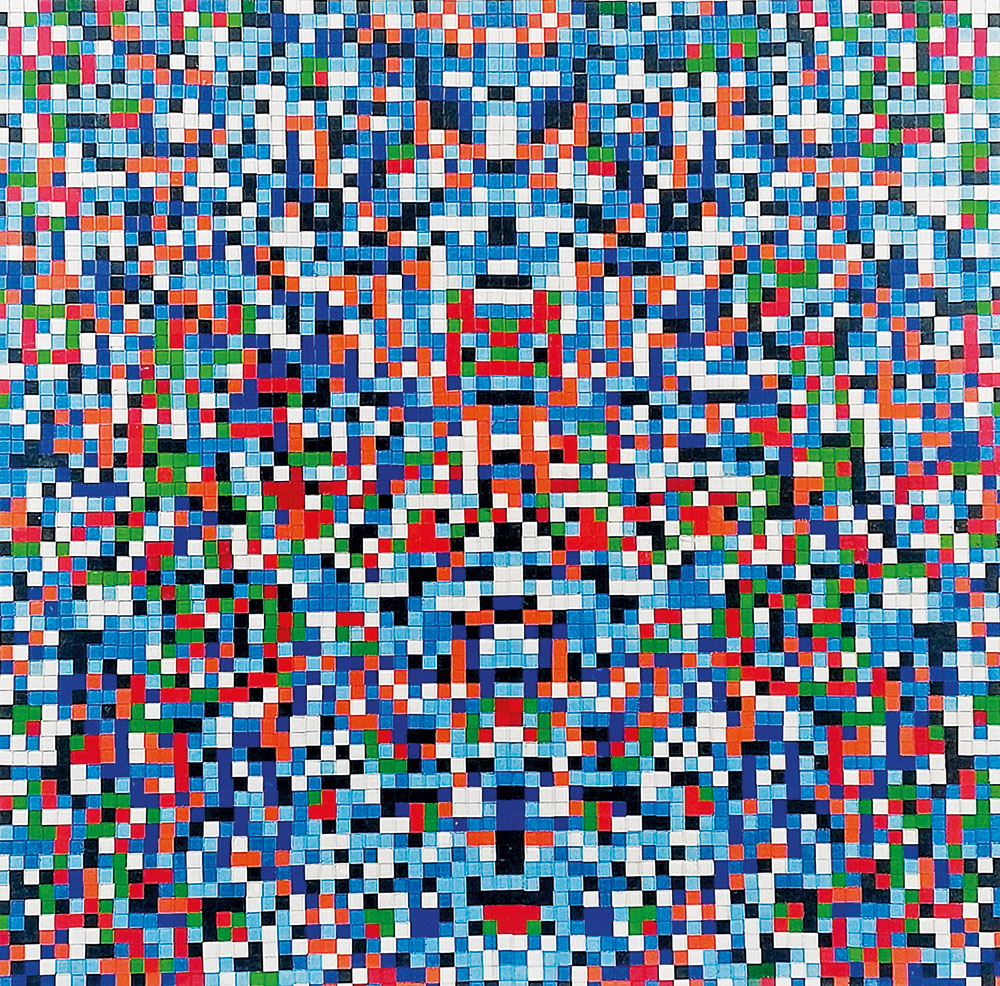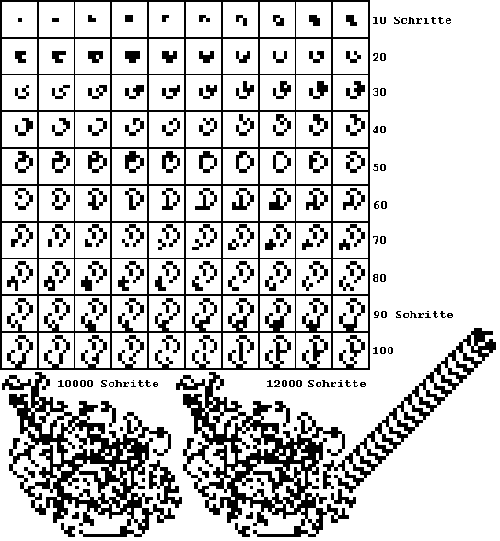| Stomachion | |||||
 |
Langton's Ant The color pattern was generated by a Langton Ant. The Langton Ant is a Turing machine* used to study the functionality of algorithms and was developed in 1986 by Christopher Langton. It is an example of how a deterministic (i.e., non-random) system governed by simple rules can exhibit both surprisingly chaotic and regular patterns. The 'ant' resides on a grid consisting of square cells, which can be either black or white. In the initial state, all cells are white, and the ant is facing a particular direction (in the representation, downwards to the right). Transition to the next state occurs according to the following rules:
In the first approximately 500 steps, symmetric patterns repeatedly appear. Afterward, for around 10,000 steps, the ant forms a complex, chaotic pattern. Finally, it transitions to constructing a regular structure ('ant highway'): every 104 steps, it reaches the same state, diagonally shifted by 2 cells. The color pattern depicted here is based on a generalization of the classical Langton Ant. Instead of just black or white, a cell can assume eight different colors, with each color being associated with one of the two turning directions (90° to the right or to the left). The original Langton Ant is described by the rule 'RL.' The pattern shown here, with eight colors, follows the rule RLLRRLLR for the colors white, black, green, red, orange, light blue, medium blue, dark blue. The ant starts on a cell in the middle and faces upward. The color of the current cell determines whether the ant moves to the right or left. If the cell has the first color, then the first letter of the ant code determines the direction; if it has the second color, the second letter determines the direction, and so on. After the ant moves to the adjacent cell, the color of the previous cell is incremented. Once all colors are 'used up,' the cell reverts to the first color.
|
Colored Langton Ant pattern with the colors white, black, green, red, orange, light blue, medium blue, dark blue, assigned to the rule RLLRRLLR (Acrylic tiles on lightweight panel, 70 x 70). |
|
|
